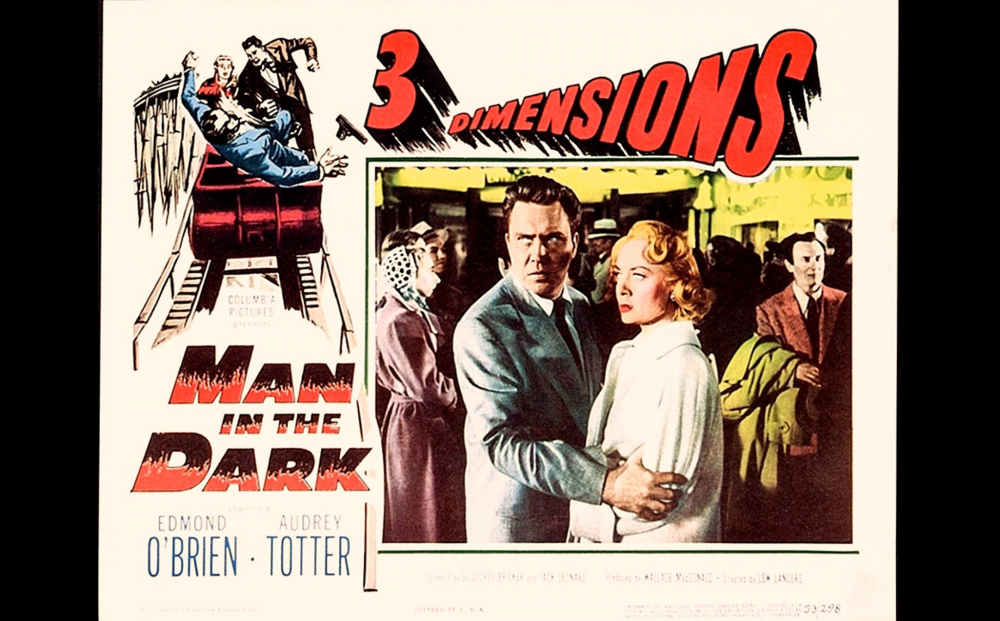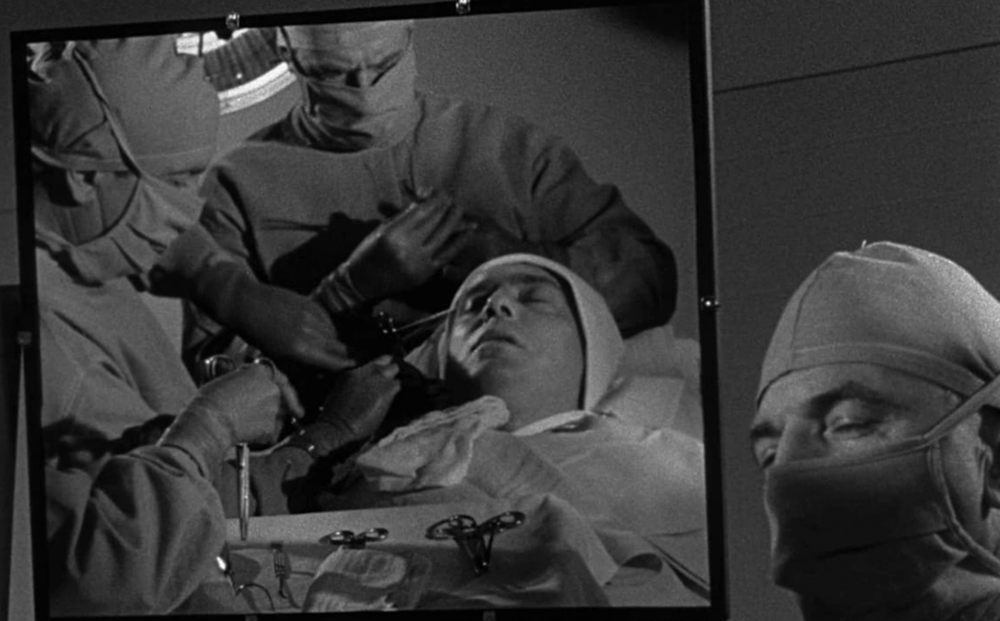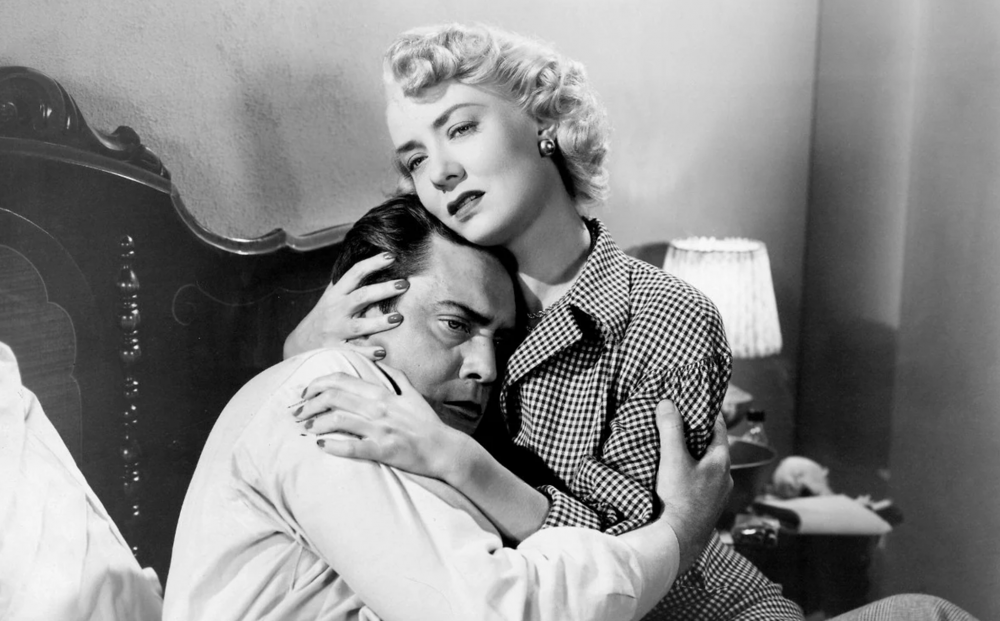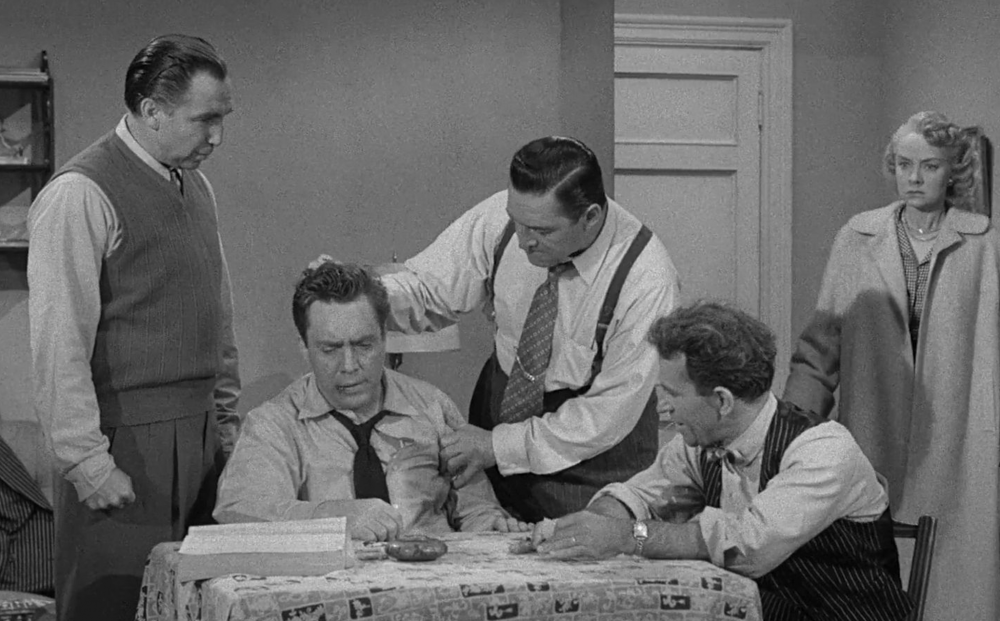MAN IN THE DARK in 3-D
U.S., 1953
Directed by Lew Landers
Starring Edmond O'Brien, Audrey Totter, Ted de Corsia
First 3-D feature released by a Hollywood studio.
Approx 90 min. DCP. 3-D restoration courtesy Sony Pictures.
Gangster Edmond O’Brien gets amnesia after experimental brain surgery to cure his criminal tendencies — then his old gang wants to know where he stashed the loot. First 3-D movie released by a major studio (months before HOUSE OF WAX), photographed by the great Floyd Crosby, cinematographer of HIGH NOON and Murnau’s TABU (and father of Crosby, Stills & Nash’s David Crosby). “Shot in eleven days on a typically stringent Columbia [Pictures] budget, MAN IN THE DARK is a trim thriller with a far-fetched story…. Unable to remember who he is or was, [O’Brien] can recuperate his past only through dreams; postoperation, he sees the world from a new vantage point, one that he can’t navigate securely. A man with a dual identity—indeed, a man who has lived twice—Steve is an ideal 3-D protagonist. His altered state reflects the experience of viewers at the time adjusting to the “altered” vision enabled by 3-D….The logic-defying story is merely a pretext for showing off 3-D; and as a demonstration of how the stereoscopic image can enhance tension and atmosphere, MAN IN THE DARK is in fact exemplary. [Director Lew] Landers and [cinematographer Floyd] Crosby clearly understand that 3-D often works best with radically simplified images, a procedure for which Columbia’s famously spare, cost-cutting sets were useful. Steeped in shadows, the bare-bones apartment in which the criminals hide out trying to get Steve to remember where he stashed the money; the empty corridors of the hospital where Steve undergoes his operation; and a deserted house where he used to live—all radiate, in 3-D, an aura of creepy isolation. On a shelf in the hideaway apartment is a lone piggy bank, which in 3-D acquires an illuminated, otherworldly quality, a life of its own.” – Foster Hirsch
Reviews
“[Takes] unashamed advantage of [3-D]’s flinch-inducing potential.”
– Dave Kehr, The New York Times




